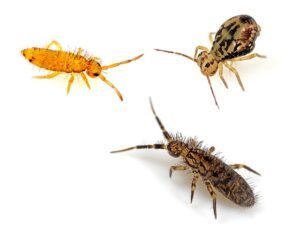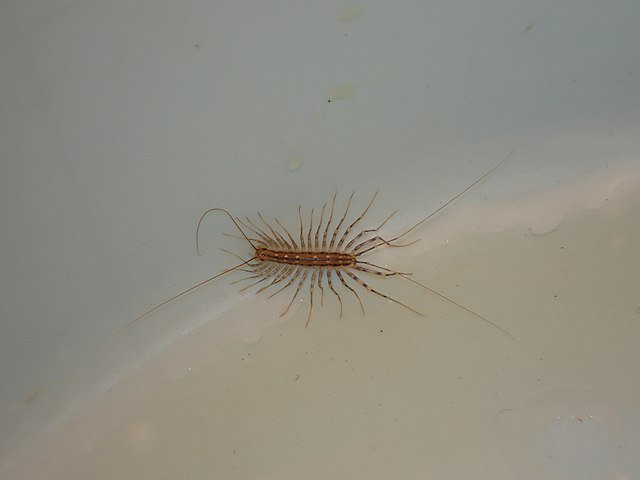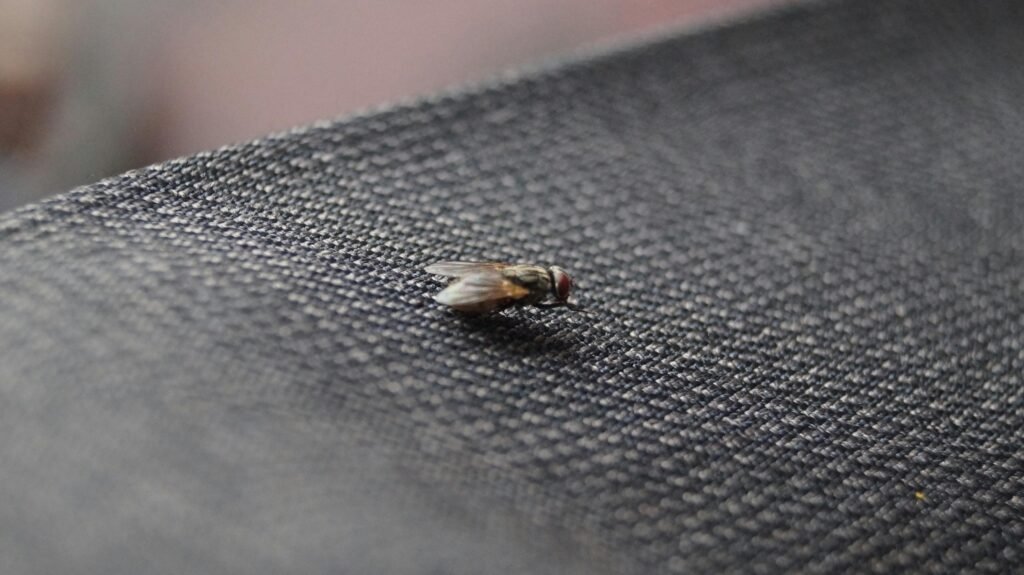Springtails in House: How to Get Rid of Them
What Are Springtails?
 Springtails (Collembola) are very small insects, usually less than 1–2 mm long. They get their name from the “spring” mechanism (called furcula) on their abdomen, which allows them to jump when disturbed. We do not confuse them with fleas, they look like more to booklice , but booklice don't jump but walks nervously. Springtails are not dangerous to humans, but they can appear in large numbers and can be a nuisance.
Springtails (Collembola) are very small insects, usually less than 1–2 mm long. They get their name from the “spring” mechanism (called furcula) on their abdomen, which allows them to jump when disturbed. We do not confuse them with fleas, they look like more to booklice , but booklice don't jump but walks nervously. Springtails are not dangerous to humans, but they can appear in large numbers and can be a nuisance.
They feed on mold, fungi, algae, and decaying plant matter. They love humidity so it is common to be found in places like bathrooms, kitchens, basements, and overwatered gardens.
Identification: How to Recognize Springtails
Springtails (Collembola) are wingless, soft-bodied insects with elongated or rounded bodies. Most species are white, gray, or light brown, making them hard to notice on light surfaces. Their key identifying feature is the furcula, a forked appendage folded under the abdomen. When disturbed, this structure snaps against the surface and launches the insect into the air. This jumping behavior clearly separates springtails from booklice (psocids), which never jump and only walk quickly.
Biology and Ecology
Springtails thrive in moist environments because their bodies lose water easily. They reproduce rapidly in humid conditions, laying eggs in soil, cracks, or damp building materials. Under ideal moisture levels, populations can increase dramatically within weeks. Indoors, they survive by feeding on mold spores, fungi, and organic residues rather than human food. Outdoors, they are part of the natural soil ecosystem and contribute to decomposition and nutrient recycling.
Global Distribution
Springtails are found worldwide, from temperate regions of Europe and North America to tropical areas of Asia and Australia. In colder climates, indoor infestations are more common during rainy seasons or winter, when springtails migrate indoors seeking stable humidity. In warmer regions, they are frequently associated with irrigation systems, greenhouses, and poorly drained gardens.
Signs of a Springtail Infestation
Common signs include:
Tiny insects jumping near sinks, bathtubs, or floor drains
Clusters around window sills, bathrooms, or damp walls
Increased activity after cleaning or disturbing wet areas
Presence near soil pests, fungus gnats, or booklice in humid environments
Because of their size, infestations are often mistaken for mites or fleas, but fleas bite and springtails do not.
Why Do Springtails Come Into the House?
Springtails invade homes when there is too much moisture. Common attractants include:
Leaky pipes and sinks
Wet bathroom floors and tiles
Damp basements or crawl spaces
Potted plants with soggy soil
Poor ventilation around windows or walls
Are Springtails Harmful?
Springtails do not bite, sting, or spread diseases. However:
Large infestations can cause discomfort.
They may damage young seedlings in greenhouses or gardens.
Their presence usually signals a moisture problem that could lead to mold or structural issues.
How to Get Rid of Springtails in the House
If you see tiny jumping bugs around sinks, tubs, or walls, here are the most effective methods:
Reduce Moisture – Fix leaks, improve ventilation, and use a dehumidifier in damp rooms.
Dry Out Potted Plants – Avoid overwatering indoor plants. Let the topsoil dry before watering again.
Clean Mold and Mildew – Use safe household cleaners to remove organic growth where springtails feed.
Vacuum Regularly – Remove visible springtails from floors, windowsills, or bathrooms.
Seal Entry Points – Repair cracks around windows, doors, and foundations to stop them from coming inside.
Homemade Springtail Killer Spray
A simple DIY option is a soapy water spray:
Mix a few drops of dish soap with water in a spray bottle.
Spray directly on springtails in bathrooms, kitchens, or plants.
This kills them on contact but works best alongside moisture control.
Advanced and Professional Control Methods
For persistent infestations, moisture correction alone may not be enough. Professional pest control technicians may:
Apply residual insecticides labeled for springtails in cracks, drains, and entry points
Treat exterior foundations and damp soil around buildings
Inspect for hidden leaks, condensation issues, or mold growth inside walls
Recommend long-term humidity management strategies
Chemical treatments without moisture control usually fail, as springtails quickly return.
Springtails in Soil and Gardens
Springtails in the garden are usually harmless, even beneficial, because they help decompose organic matter. But if populations get too high:
Reduce watering frequency.
Improve soil drainage.
Add mulch carefully, avoiding thick wet layers.
FAQ
How to get rid of springtails in bathroom
Ventilate daily, wipe off wet surfaces, and use fans or dehumidifiers.
Apply soapy water spray directly on tiles and cracks.
How to get rid of springtails in soil
Let soil dry out between waterings.
Repot plants if the soil stays constantly wet.
Add perlite or sand for better drainage.
Are springtails in garden good or bad?
Good: They recycle organic matter and improve soil health.
Bad: In very high numbers, they may chew on tender seedlings.
How to kill springtails instantly
Soapy water or vinegar sprays kill them on contact.
For large indoor infestations, residual insecticides can be applied by licensed professionals.
When to Call a Professional
If springtails keep coming back even after fixing moisture, it may indicate hidden leaks or large infestations. A licensed pest control technician can:
Apply professional-grade products safely.
Inspect hidden areas for leaks, mold, and entry points.
Provide long-term prevention strategies.
Sources
University of Minnesota Extension. What is springtails
Penn State Extension. Everything about springtails.
Disclaimer
This article is for informational purposes only. Pest control laws and approved chemicals vary by country. For best results and legal safety, we strongly recommend contacting a licensed pest control professional in your local area. Always make sure that the pest control technician is properly certified or licensed, depending on your country’s regulations. It’s important to confirm that they only use approved products and apply them exactly as instructed on the product label. In most places in Europe, UK, or USA, following label directions is not just best practice—it’s the law.
Discover more pest control guides on our main blog
Author:
Nasos Iliopoulos,
MSc Agronomist & Certified Pest Control Expert
Scientific Director, Advance Services (Athens, Greece)
Licensed Pest Control Business – Ministry of Rural Development & Food (GR)


